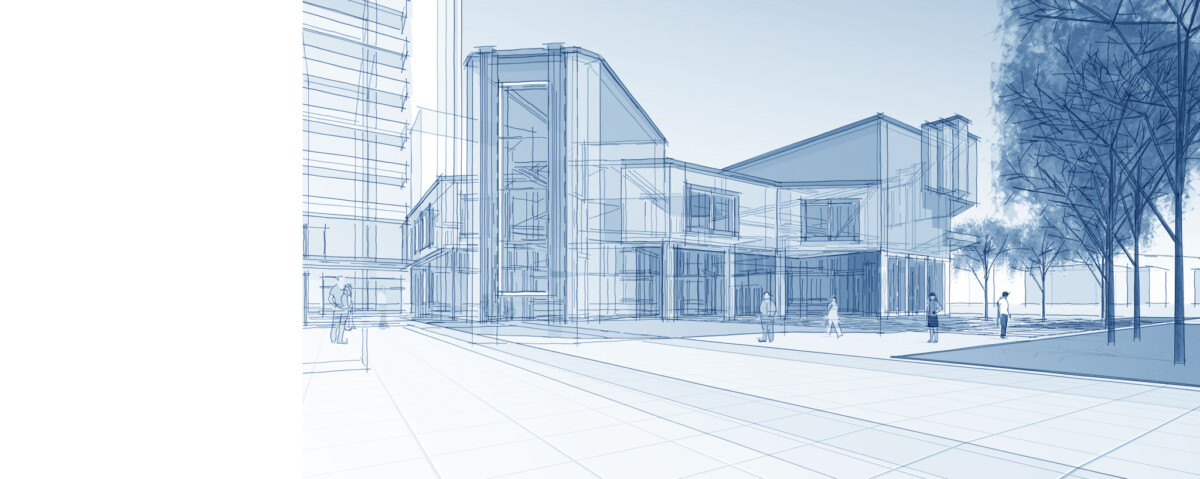In real estate, a zero-lot line is a term that often surfaces in discussions about property boundaries and home design. Understanding what a zero-lot line is, how it affects property use, and its implications for homeowners is crucial for anyone considering buying or developing property. This article will delve into the concept of a zero-lot line, its benefits and drawbacks, and its impact on residential and commercial properties.
What is a Zero Lot Line?
A zero lot line is a legal term referring to a property line situated directly on a lot’s edge. A building or structure can be constructed up to the property line with no required setback from the boundary. In traditional zoning and land use practices, setbacks are mandated to create space between structures and property lines for various reasons, including privacy, safety, and aesthetics. A zero lot line deviates from this norm by allowing buildings to occupy the entire width of the lot, often resulting in a more compact and efficient use of space.
Characteristics of Zero Lot Line Properties
1. Proximity to Property Lines: Buildings on zero-lot-line properties are built right up against one or more property boundaries, which can lead to structures that are very close to adjacent properties.
2. Shared Walls: Zero lot line properties may feature shared walls between units in residential developments, such as townhomes or duplexes. This can maximize land use and reduce construction costs but may also lead to noise and privacy concerns.
3. Reduced Yard Space: With buildings extending to the property lines, there often needs to be more yard space on one side of the property. This can affect outdoor living areas, gardening, and overall property aesthetics.
Benefits of Zero Lot Line Developments
1. Efficient Land Use: Zero lot line designs make optimal use of available land, especially in densely populated urban areas with limited space. This efficiency allows for more housing units or commercial spaces within a given area.
2. Increased Privacy for Certain Sides: While a zero-lot-line property may have reduced yard space, it can also enhance privacy on the side of the building that is not adjacent to another property. For example, suppose a home is built up to one property line but has open space on the other side. In that case, the homeowner may enjoy more privacy in their backyard.
3. Lower Costs: Constructing buildings on zero lot lines can lower construction costs by reducing the need for extensive land development, landscaping, and utility installations. This can lead to more affordable housing options and commercial properties.
4. Encourages Compact Communities: Zero lot line developments are often used in planned communities, where space efficiency and design consistency are prioritized. This can create more cohesive and walkable neighborhoods with accessible amenities.
Drawbacks of Zero Lot Line Developments
1. Reduced Outdoor Space: One of the primary drawbacks of zero-lot-line properties is the reduction in outdoor living space. Homeowners may need more room for gardening, outdoor activities, or entertaining, which can impact their overall quality of life.
2. Potential for Privacy Issues: Living close to a property line can lead to privacy concerns, particularly if windows or outdoor areas face neighboring properties. Noise and light intrusion from adjacent buildings can also be issues.
3. Maintenance Challenges: Maintenance and repair work can become more challenging with buildings extending to property lines. For instance, homeowners may need more access to their property’s exterior walls, making it harder to perform repairs or updates.
4. Aesthetic Considerations: Zero lot line properties can sometimes lead to a less aesthetically pleasing environment if not designed thoughtfully. The proximity of structures can create a sense of crowding and may affect the neighborhood’s visual appeal.
Zero Lot Line in Residential Developments
Zero lot line developments are common in residential areas, including townhomes, duplexes, and patio homes. These designs are particularly prevalent in urban and suburban settings where land is scarce and expensive.
Townhomes: Often constructed in a row with shared walls, townhomes on zero lot lines can provide affordable housing solutions while maximizing land use. These developments typically have small front and back yards, with living spaces extending to the property boundaries.
Duplexes: Zero lot line duplexes, which consist of two attached homes, can benefit from shared walls and efficient land use. These properties balance private homeownership and the benefits of close-knit communities.
Patio Homes: Designed for ease of maintenance and accessibility, patio homes on zero-lot lines often feature compact designs with minimal yard space. They are popular among retirees and empty-nesters who prioritize low-maintenance living.
Zero Lot Line in Commercial Developments
Zero lot line concepts are also applied in commercial real estate to optimize land use in busy commercial districts.
Retail Centers: Zero lot line designs in retail centers allow for more storefronts within a given area. This can attract higher foot traffic and increase business opportunities by maximizing visibility and accessibility.
Office Buildings: In office parks or business districts, zero lot line designs can accommodate more office space while maintaining a compact footprint. This can benefit businesses seeking to establish a presence in high-demand locations.
Mixed-Use Developments: Combining residential and commercial spaces, mixed-use developments on zero lot lines can create vibrant, walkable communities with easy access to amenities and services.
Legal and Zoning Considerations
Before developing or purchasing a zero-lot-line property, it is essential to understand local zoning laws and regulations. Zoning ordinances dictate the allowable use of land, including setback requirements, building heights, and density limits. Some municipalities may have specific rules regarding zero-lot-line developments to address privacy, safety, and neighborhood character concerns.
1. Check Local Zoning Codes: Verify the zoning regulations for the area you plan to build or buy. Zoning codes will outline the permitted uses and specific requirements or restrictions for zero-lane properties.
2. Consult with Professionals: Engage with real estate agents, architects, and legal professionals to ensure your zero-lot line project complies with all relevant regulations and meets your needs and expectations.
3. Understand Homeowners Associations (HOAs): In some planned communities, HOAs may have additional guidelines or restrictions related to zero-lot-line properties. Review any HOA rules to ensure that your plans align with community standards.
Conclusion
Zero lot line developments offer an innovative approach to land use, providing efficient and cost-effective solutions for residential and commercial properties. While they present several benefits, including optimal land use and lower construction costs, they also have drawbacks, such as reduced outdoor space and potential privacy issues. Understanding zero-lot line properties’ characteristics, benefits, and challenges can help buyers and developers make informed decisions and effectively navigate the complexities of real estate development. Whether considering a zero lot line property for residential or commercial purposes, careful planning and adherence to local regulations will be critical to a successful outcome.










